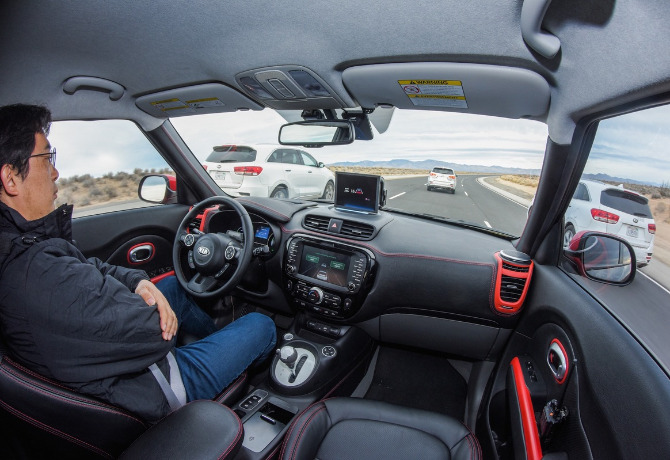The race to evolve driverless cars to the next level changed gear yesterday with several announcements at CES 2016 in Las Vegas.
Ford opened a day of back-to-back press conferences with the news it was tripling the number of autonomous test vehicles in its fleet to 30 and launching a smaller Velodyne Lidar (laser radar).
Lidar devices help autonomous cars scan the road ahead and collect data to plot a safer course. They’re typically large and mounted on the roof.
The new Velodyne models are the size of a large ice hockey puck and will be fitted into the side view mirrors of Ford’s Fusion Hybrid self-driving cars.
Bosch then revealed it’s working on an autonomous valet-parking system, which by 2018 will see drivers able to leave their vehicles at a carpark’s entrance, safe in the knowledge that the car will locate an available space and park itself. When it’s time to leave, the car drives itself back to the drop-off point in the same way.
According to Bosch chairman, Dr Volkmar Denner, drivers trying to find parking spaces account for 30% of the world’s urban congestion.
He said: “We’re aiming to combat this by equipping cars or parking spaces with sensors that detect and notify drivers when a space is free. This information is entered into real-time maps, which can be called up on a smartphone or in the car’s navigation system, reducing costs associated with excess fuel, driving time and CO2 emissions.”
Kia also revealed its plans to introduce partially-autonomous driving technologies to the market by 2020 and sell its first fully-autonomous car by 2030.
Its developing technologies include Highway Autonomous Driving, which uses radar and digital camera information, Urban Autonomous Driving, which relies on GPS sensors to safely navigate congested city environments while responding to live traffic updates, and Autonomous Valet Parking via a smartwatch.
The Toyota Research Institute (TRI) meanwhile, is a $1bn project studying artificial intelligence and autonomous vehicle technology.
Dr Gill Pratt, chief executive of TRI, told CES delegates it was working on 30 research projects with Stanford University and the Massachusetts Institute of Technology (MIT), with the ultimate goal of creating self-driving cars that are “incapable of causing a crash”.
He said: “With the potential to get closer to full autonomy, we hope to increase access to cars for those who otherwise cannot drive, including the handicapped and the elderly, while accelerating scientific discovery by applying techniques from artificial intelligence and machine learning.”








